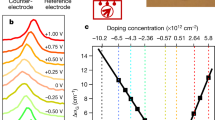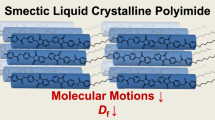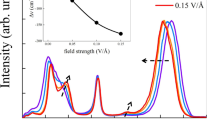Abstract
IF a high-frequency alternating field is applied to a system containing mobile ions or movable dipoles, the loss factor should increase when the applied frequency approaches the natural relaxation frequency of the system. In dilute aqueous solutions of simple electrolytes this frequency is of the order 100 Mc./s. (Falkenhagen effect); in pure water it is 10,000 Mc./s. (dipole oscillation effect). With polyelectrolytes the cylindrical symmetry of the ionic atmosphere results in a much slower relaxation (0.1–1 µ sec.)1, and we have now found a similar effect but with a much higher loss factor for microscopic two-phase systems, such as fibres, suspensions and emulsions, with water as the continuous phase. It also occurs in disperse systems where the continuous phase is an insulator, and is indeed more easily verified than with aqueous systems, when the frequency-independent conductance may mask the critical frequency effect.
This is a preview of subscription content, access via your institution
Access options
Subscribe to this journal
Receive 51 print issues and online access
$199.00 per year
only $3.90 per issue
Buy this article
- Purchase on SpringerLink
- Instant access to full article PDF
Prices may be subject to local taxes which are calculated during checkout
Similar content being viewed by others
References
Chadwick, C. S., and Neale, S. M., Nature, 173, 493 (1954).
Author information
Authors and Affiliations
Rights and permissions
About this article
Cite this article
JOHNSON, G., NEALE, S. Dielectric Absorption in Dispersed Systems. Nature 184, 898–899 (1959). https://doi.org/10.1038/184898a0
Issue date:
DOI: https://doi.org/10.1038/184898a0



